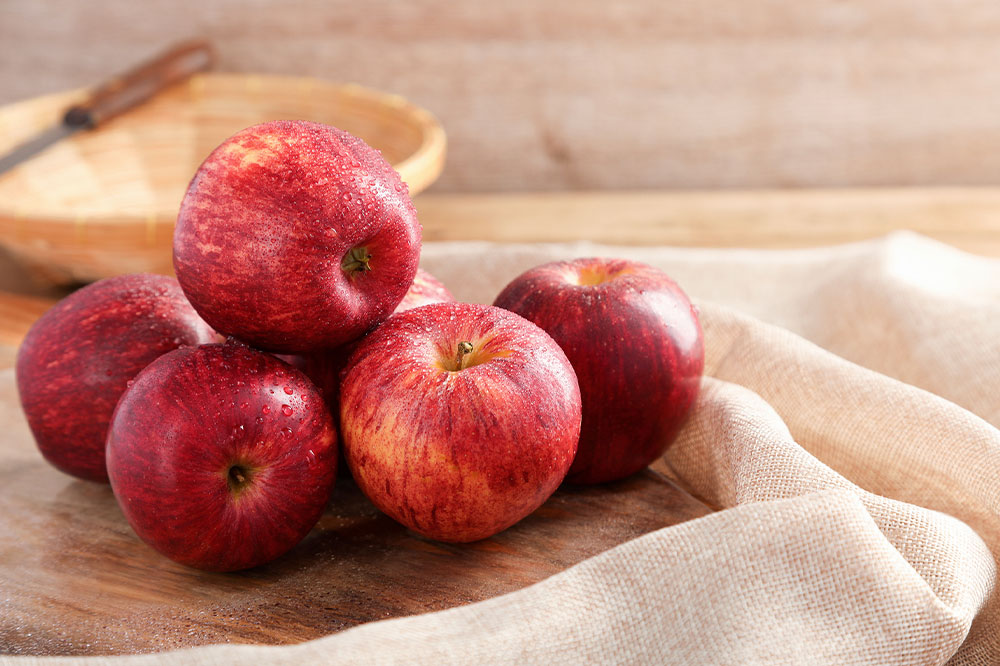5 foods that help improve lung health

Our lungs help us receive oxygen and release carbon dioxide through breathing. The body’s natural defense system protects the lungs from infections, germs, and other pathogens. But you can also improve lung health by making specific lifestyle changes like following an active lifestyle and breathing fresh air. Further, the right nutrition plan is crucial. The following foods have essential nutrients that keep the lungs healthy and lower the risk of diseases:
High-fiber foods
Inflammation is among the leading causes of lung diseases like asthma and chronic obstructive pulmonary disease (COPD), and fiber can help fight inflammation. A molecule in the blood called C-reactive protein (CRP) indicates inflammation in the body. Fiber-rich foods can contain CRP levels and protect the lungs. Fiber can also improve gut health by increasing the production of short-chain fatty acids. Some fiber-rich foods that promote healthy lungs are apples, artichokes, beans, berries, brown rice, quinoa, sweet potatoes, peas, cereal, and whole-grain bread.
Vitamin C-rich foods
Vitamin C is a vital nutrient that protects our cells from oxidative stress. It also has properties that protect the lungs from free radicals. Research shows that people who lack vitamin C may have decreased lung function, which may lead to infections. The best vitamin C-rich foods to add to the meal plan to fight a deficiency are citrus fruits like orange, grapefruit, and lemon. Other fruit options are guava, kiwi, mango, muskmelon, papaya, pineapple, and watermelon. Veggies like bell peppers, broccoli, cauliflower, tomatoes, and turnip also have vitamin C.
Vitamin D-rich foods
Research has shown that vitamin D can help improve lung function and strengthen the muscles in the respiratory system. A lack of this nutrient can worsen COPD symptoms and increase the risk of upper respiratory tract diseases, tuberculosis, asthma, and wheezing. Adding vitamin D-rich foods to the daily meal plan can help overcome its deficiency. The best options are beef liver, cod liver oil, egg yolk, fortified fruit juices and cereal, mushrooms, and fishes like salmon, sardines, swordfish, and tuna. Apart from food, one can spend about 30 minutes in the sun to increase vitamin D intake and reduce COPD severity.
Complex carbs
Simple carbohydrates metabolize quickly, producing a lot of carbon dioxide, which we exhale and expel. Those with lung-related disorders may have problems because the organ must work harder to expel carbon dioxide. If a person is at risk for COPD or has lung-related diseases, they should shift to a meal plan rich in complex carbs that can supply nutrients like vitamins, minerals, and fiber. Suitable examples include beans, lentils, legumes, and whole grains like brown rice, oatmeal, quinoa, and bulgur. Fiber-rich vegetables like sweet potatoes and pumpkin are also great.
Healthy fats
Unhealthy fat accumulates into fatty tissues, interferes with respiratory function, and reduces lung volume. It can also adversely affect the functioning of lung muscles and increase the effort to breathe. In addition, fatty food can put one at risk for lung cancer. Adding plant-based fats and omega-3 fatty acids to daily meals can reduce the risk of these problems. Some food options rich in healthy fats that improve lung health include avocado, chia seeds, flax seeds, tofu, walnuts, and soymilk. Other options are fatty fish like sardines, herring, trout, mackerel, tuna, and salmon. One can also substitute regular oil with canola, coconut, or olive oil.
Poor lung health can lead to asthma and other respiratory conditions, which can be controlled with the following treatments:
Tezepelumab
Tezepelumab is an FDA-approved treatment for those above 12 years with severe asthma. It helps stop inflammation, which is the primary cause of asthma attacks. However, tezepelumab is an add-on option to be used along with the patient’s ongoing treatment plan. One must consult a doctor to determine the dosage. It can have side effects like sore throat and back pain.
FASENRA
FASENRA is another option to be used along with ongoing asthma treatments to control the symptoms. It is suitable for patients above 12 years. However, one should check with the doctor if the ingredients in FASENRA can lead to an allergic reaction. The treatment may be unsafe for people who have had parasite infections.
NUCALA
It is an add-on treatment for those over six years with severe eosinophilic asthma. The condition is caused due to an increase in the number of white blood cells called eosinophils. NUCALA works by reducing the amount of these cells. The treatment may also help reduce the size of certain types of nasal polyps but cannot be used for any sudden breathing-related problems.
XOLAIR
XOLAIR treats moderate to severe asthma symptoms in patients above six years. It is used only when the current treatment is ineffective in controlling the problem. XOLAIR can also treat chronic hives in children above 12 and nasal polyps in people above 18.
ZYRTEC
Seasonal allergies can affect lung health. ZYRTEC is an antihistamine that can treat allergy symptoms like sneezing, runny nose, watery eyes, and itching. It can also treat chronic urticaria or hives. The treatment could affect a person’s thinking and reactions. It is also not advisable to drive after a dose as it can cause sleepiness. One should talk to a doctor about any other treatment they are on before using ZYRTEC.









